More about Thimbles





Magdalena and William Isbister.
In the Middle Ages Nürnberg was one of the most important thimble making centres in Europe. There were hundreds of thimble makers in the city but, sadly, very few records exist relating to the thimble makers themselves. When thimbles were made by casting brass alloys the thimble makers belonged to the Coppermakers Guild but later when thimbles could be made by ‘deep drawing’ brass disks the thimble makers were allowed to create a Guild of their own. A little is known about a few of these early Nürnberg thimble makers from their graves and epitaphs and in this paper we examine the known thimble maker’s graves.
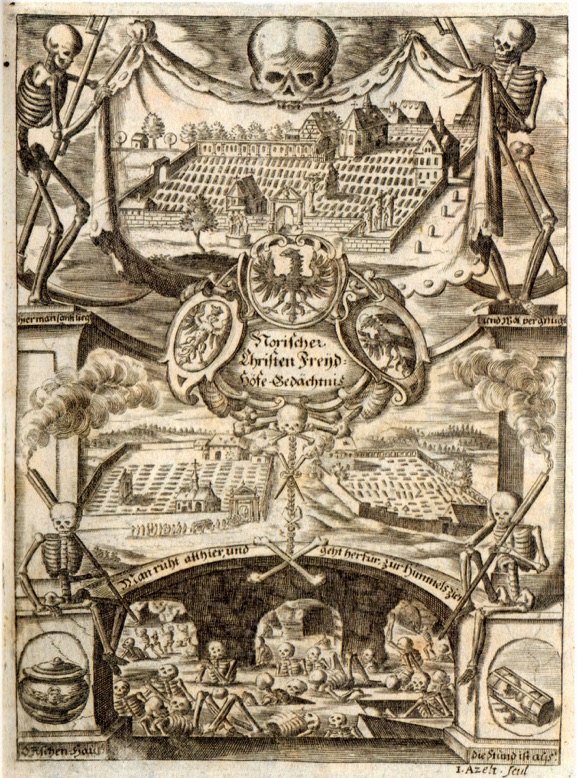
Fig 1
In 1682 Johannis Gugel published a book about the Christian graveyards in Nürnberg (1). A copper engraving by Johann Azeit which is the frontispiece of the book realistically depicts the St Johannis (top), Rochus (bottom left) and Wöhrd (bottom right) cemeteries (Fig 1). In Gugel’s book the epitaphs are described in detail and these descriptions are particularly important in relation to the early graves since some of the original epitaphs have disappeared over time. Some were probably stolen, some may have been damaged during the Second World War and some were possibly removed when a different family bought the grave. Now the epitaphs may not be removed.
The Medieval walled city of Nürnberg was separated into two by the river Pegnitz. The city to the North of the river was served by the St Sebaldus Church and the town to the South of the river by the Lorenz Church. Each church had its own cemetery situated outside the wall of the city. The St Johannis cemetery belonged to St Sebald and was situated to the North West of the city, and in the South West, the St Rochus belonged to the Lorenz Church. After 1518 the city’s dead were buried outside of the town because of the plague, which was prevalent at the time, and the need for isolation of the heavily infected corpses.
Hans Beheim the Elder built the chapels in both St Johannis and St Rochus.
St. Johannis Cemetery
In St Johannis the pestilence graves were situated to the East of the St Johannis Church (Figs 2, 3) and this constitutes the oldest part of the cemetery.
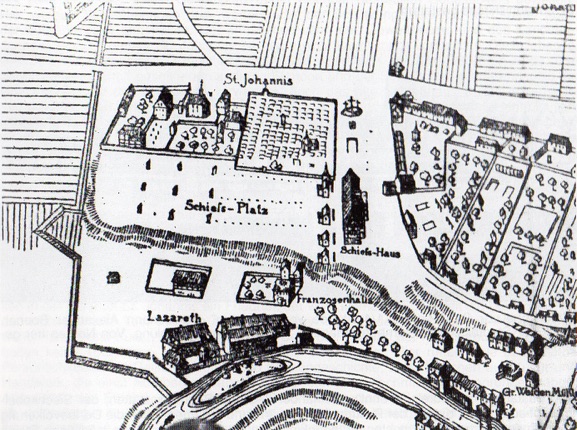
Fig 2. Part of the city plan from around 1700 showing the church and graveyard.

Fig 3. Funeral procession ca. 1700.
Local farmers and villagers were also allowed to use the cemetery but their graves were separated by walls from the pestilence graves. Later the walls were removed. Many of the early Nürnberg thimble makers were buried in these two cemeteries and some of the graves are marked with bronze plaques or ‘epitaphs’, which were allowed after 1520, depicting either their maker’s marks or their trade itself.
Little is known about the early Nürnberg thimble makers, their lives or their marks because all of the old records were destroyed by fire in 1571. Much of what is known in relation to the graves is derived from the inscriptions on the grave plaques themselves (2, 3) and birth, marriage and death details in church records (4).
Most of the older graves are covered with a rectangular sandstone without a headstone. The family name and or any other information regarding the grave or family to whom it belongs or may have belonged to in the past may be seen in bronze plaques (epitaphs) which are nailed to the top surface of the stone. The stone is engraved with the grave number only although some of the old numbers may be difficult to read. The plaques are sometimes very difficult to read and the spelling is often quite variable making interpretation even more difficult. Many of the plaques were prepared during the life of the person commissioning the plaque so that there may be blank spaces for dates if family members have failed to ensure correct date entry.
Initially the grave was bought for a specific period. If at the end of this period the grave monies were not paid for the continued use of the grave, then the grave could be sold to another family. In these circumstances the new family could choose to retain the original epitaph in addition to their own one or they could remove all evidence of the original owners. In this way several family names may appear on a single gravestone. Often a daughter and members of her family were buried in the grave belonging to her father and in this way another family name may be added to the same gravestone. It is now not possible to determine whether the multiple family names often found on thimble makers’ graves were those of relatives or new occupants.
The two best-known Nürnberg thimble makers’ graves are to be found in St Johannis. Greif has written at length about Georg Endtner and Hans Tober (5) and only a brief summary will be given in this paper.
St Johannis is still in use today and old graves from the middle ages may be seen alongside modern day graves.
The positions of individual graves may be found on a map of the graveyard which can be obtained from an office in the Steinschreiberhaus (Fig 4). The main entrance to the graveyard is in the North wall close to the St Johannis Church and the second entry is in the East wall (Fig 5).
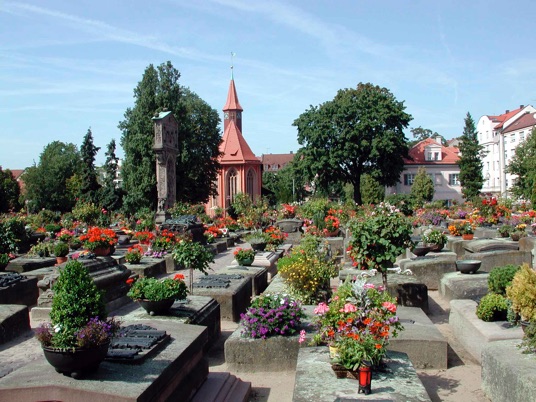
Fig 4. Müntzer’sche Grabdenkmal, St Johannis Church and the Steinschreiberhaus.
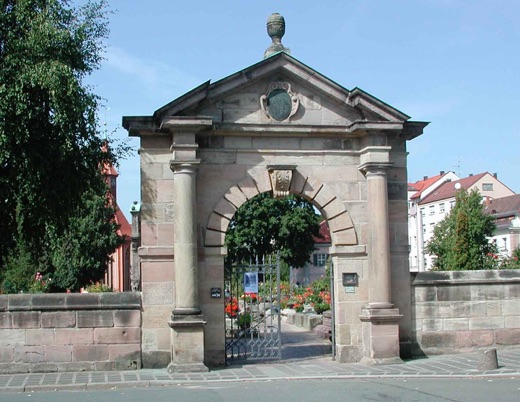
Fig 5. East gate.
Grave 302 Gerg Endtner
The Endtner family probably came from Hersbruck where they were farmers (5). Members of this family probably came to Nürnberg and two thimble making lineages have been identified (5). Around 1499 Gerg Endtner was borne and after serving as an apprentice and later journeyman became a Master Thimble maker in 1521. He seems to have had three wives and at least 14 children many of whom became Masters too. He bought a house in the Neue Gasse in 1548 and seems to have quite wealthy having bought a house for one of his sons the previous year. One of his other sons, Jörg, wanted to introduce a new turning wheel which would increase his productivity but this was forbidden by the Council of Thimble Makers on the grounds that it would give Jörg an advantage over his fellow masters. Gerg Endtner died in 1568 at about age seventy having earlier bought a plot for his grave in St Johannis some 11 years previously in 1557 (Fig 6).
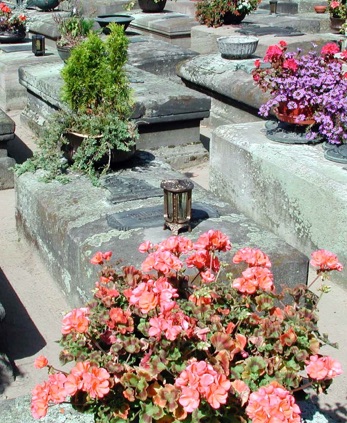
Fig 6
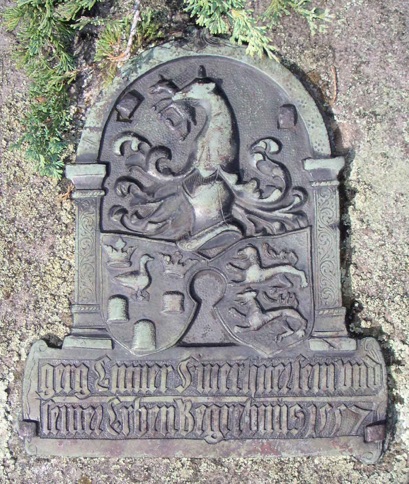
Fig 7
There are two plaques on the stone. A coat of arms (Fig 7) depicting a duck between two crowns and above three thimbles on the left and two lions on the right both below a wolf with a lamb in its mouth. Below an inscription reads:
‘gerg Entner Finerhiter sein vnd
seiner Erben Begrebnus 1557’
(Gerg Entner, thimblemaker, his and his heirs’ burial place 1557)
The duck was the master’s mark of the Endtner workshops (5).
Two others shared this grave, Dilling Briller (1523) and Veitt Wagesayell (1567) but neither of these plaques remains on the stone today (6). It is not known whether the families were related to Gerg Endtner.
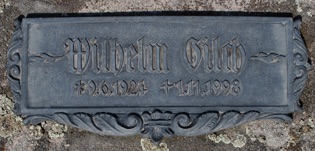
Fig 8
Today the second plaque (Fig 8) is simple and bears the name of Wilhelm Gilch.
Grave 312 Hans Wolff
Nothing seems to be known about Hans Wolf as a thimble maker but the presence of two ‘thimbles’ on his epitaph suggest this to be the case.
There are two plaques on this grave (Fig 9). One simply lists the families using the grave ‘Ehrlich-Wolf’. The other plaque comprises a rectangular frame containing the epitaph:
‘Hannsz Wolff Rodtschmidt, Sonst
Barthlmuß genant vnnd Katharina
sein Ehwirttin ir vnd Jrer Beider Erbe
Begrebnuß Anno Domini 1584
Wir leben Oder Sterben so sindt wir
Gottes, Rommern Am. 14’
(Hans Wolff, coppersmith, otherwise called Barthelmus (7) and Katharina his wife, her [inheritors] and both of their heirs’ burial place in the year of Our Lord 1554
‘We live or die so we are the Lord’s Romans 14 /8)
Below the epitaph is a circular medallion containing a shield supported by two leopards. The shield depicts the products made by a coppersmith, a syringe, a candlestick, and two thimbles and the initials ‘HW’. There can be no doubt that Wolf was a coppersmith and since thimble makers were initially coppersmiths, Wolff might have been a thimble maker too. Whether the ‘thimbles’ depicted on the plaque represent true thimbles or copper cups used for ‘cupping’ in the middle ages is difficult to determine (Fig 10). There do not seem to be any dimples on the ‘thimbles’ so they may, in fact, be cups, and Wolff may not have been a thimbl emaker.
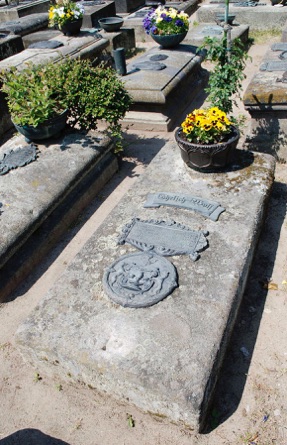
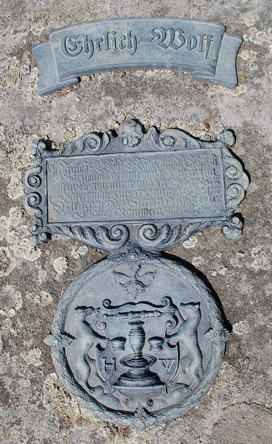
Fig 9
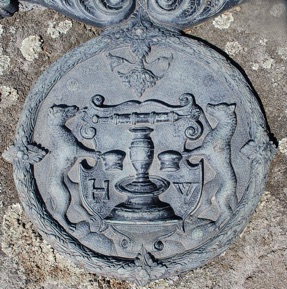
Fig 10
Grave 511 was Jorg Bischoff now Fam. Fuchs
In the 18th century there were three epitaphs on this stone (8). The top one belonged to Jeronimo Udelung, a goldbeater. The middle plaque, according to the first reference to the name was Jorg Vischof or Ulschof (8) but according to Gugel, in the next century it was Georg Pischoff (9). According to Zahn, writing several hundred years later (10), the plaque was inscribed ‘ Jorg Ulschos’, but later still, Zahn corrected himself (11) and suggested that the correct inscription would have been Jorg Bischoff because he found records of three other thimble makers called Bischoff who were recorded as working in the Nürnberg area at about the same time (1560). We think, therefore, that this grave probably belonged to their father and that the most likely inscription would have been:
‘Jorg Bischoff, fingerhüter 1. 5. 4. 6’
(Jorg Bischoff, thimblemaker 1546)
Below this was a small shield with a finger ring of braided leaves and two ‘double’ thimbles (8). The third plaque belonged to Martin Blancken another goldbeater.
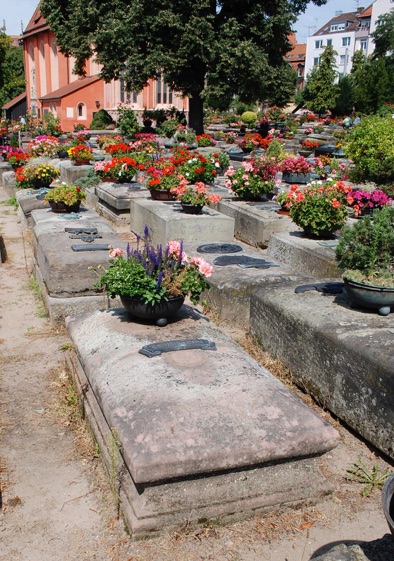
Fig 11
Now all three of the old plaques have disappeared (Fig 11), and apart from the markings where the plaques must have been, there is a new family plaque, ‘Familie Fuchs’ (Fig 12).
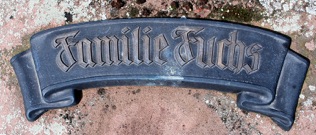
Fig 12
Grave 574 Enderas Blechner
Four families seem to be buried in this grave. Whether they are related in any way is unknown. There are four separate plaques (Fig 13) and the oldest may belong to a thimble maker. There can be no doubt that Enderas Blechner was a coppersmith in the 16th century as was Hans Wolf (grave 312) but like Wolf the ‘thimble’ depicted on his plaque may be a ‘cupping’ cup too. A rectangular bronze plaque with leafy sides has:
‘In 1570 starb Enderas
Blechner Rothschmidt
In 15[ ] starb Katharina
Blechnerin DGGS’
(In 1570 Enderas Blechner, coppersmith, died. In 15[ ] Katharina Blechner died DGGS (Der Gott gnädig sei – may god give her grace))
The date of Katherina’s death was never engraved on the plaque. Blechner was a coppersmith in the Ledergasse (12).
Below the inscription is a shield containing a moon with horns, and some of the coppersmith’s products, a candlestick, a beer barrel tap, and a ‘thimble’ or ‘cupping’ cup (Fig 14).
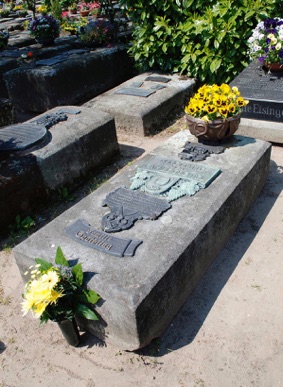
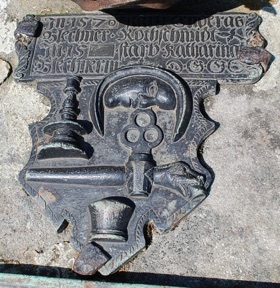
Fig 13 Fig 14
The next plaque from the 17th century is damaged and seems to belong to Hans Vischer, possibly a tailor or dressmaker because of the crossed scissors (Fig 16) on the shield (13). In 1926 the grave seems to have belonged to the Familie Greissel who appear to have been wine makers (Fig 15) and finally and most recently a modern plaque announces that the Familie Späthling are the present owners of the grave (Fig 16).
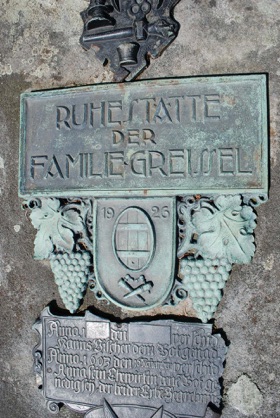
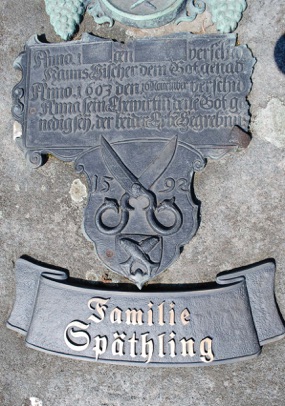
Fig 15 Fig 16
Graves 607, 627, 640 The Landauersche Zwölfbrüderhaus (Landauer Twelve Brothers Foundation).
In the 16th and 17th century, ‘Brothers’ from the Landauer Twelve Brothers Foundation in Nürnberg, the second of the two ‘Twelve Brothers’ Foundations, were buried in three graves (Figs 17, 22, 25) in St Johannis. According to Nürnberg city records, grave number 607 contained the remains of some ‘Brothers’ but graves 627 and 640 were designated the main ‘Twelve Brothers’ graves and were used alternately for ten-year periods.
607
This grave may never have had a ‘Twelve Brothers’ epitaph or it may have been removed from the grave at some time, as it was not used for long by the Foundation. There are now four plaques on the stone (Fig 17). The first owner seems to have been Hans Müllner, a goldsmith, in 1585 (Fig 18), and he was soon followed by members of the Twelve Brothers Foundation in 1594 (plaque absent). ‘Willi’, born in 1920 and killed in Russia in 1944 (Fig 19) may have been a relative of the Familie Friedlein (Fig 20), and the last plaque belongs to the Familie Diether (Fig 21).
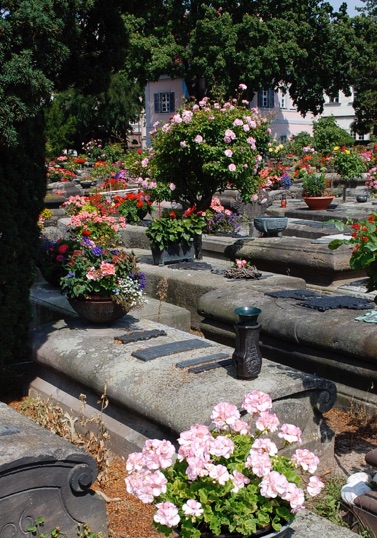
Fig 17
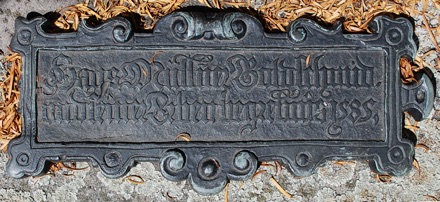
Fig 18
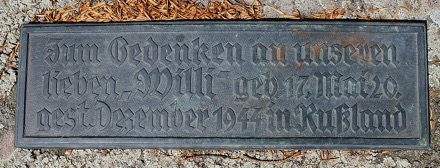
Fig 19

Fig 20

Fig 21
627
The stone on grave 627 (Fig 22) seems to have been replaced and bears a new plaque at the top (Fig 23), Leonhard Heffner, a Town Planner (1863 – 1927). Below this is the Twelve Brothers plaque (Fig 24).
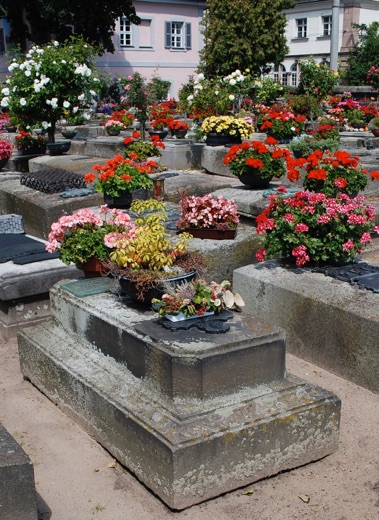
Fig 22
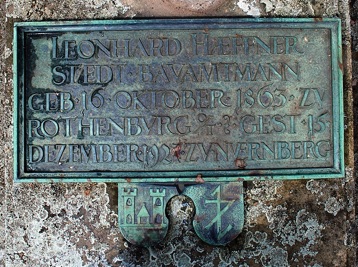
Fig 23
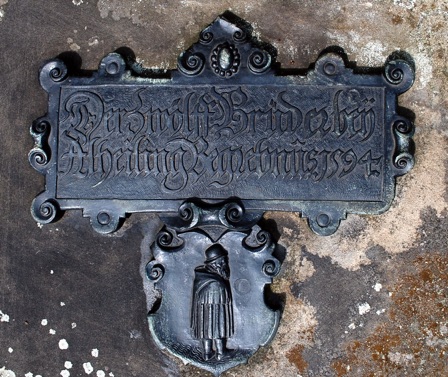
Fig 24
The plaque is inscribed:
‘Der Zwölff Brüder beÿ
Alheiling Begrebnus 1594’
(The Twelve Brothers from Alheiling burial place 1594)
Below there is a crest depicting one of the ‘Twelve Brothers’ in the Foundation uniform. The uniform comprised a black pleated cloak beneath an elbow length pleated cape over which was worn a hood. All the brothers wore narrow rimmed shaggy hats. Allerheilingen (Alheiling) was an area near to the Lauferschlagturm on the west side of the city of Nürnberg (14).
640
The third Twelve Brothers grave, grave 640 (Fig 25), bears the Twelve Brothers epitaph (Fig 26), which is identical to the previous one, above another family plaque for the Familie August Berwert (Fig 26).
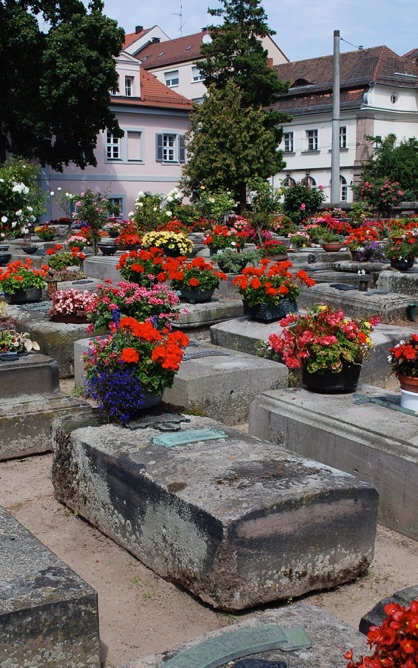
Fig 25
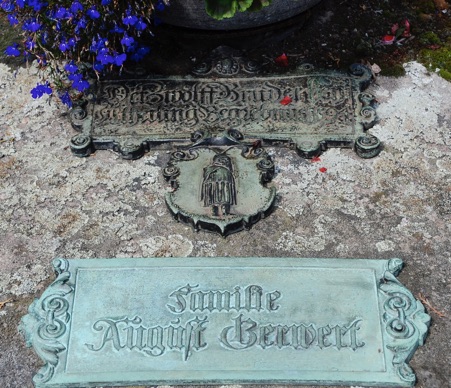
Fig 26
Most of the Twelve Brothers over the years were not thimble makers but two of the brothers buried were known to be thimble makers. Wolf Laim (1549-1621) was a thimble maker (Fig 27) who lived in the Landauer home for three years and 11 months. He was 72 years old when he died. Georg Hernia (1569-1640) was in the Landauer home for 1 year before he died at age 71. He made thimbles but later he became a bale binder (Fig 28).
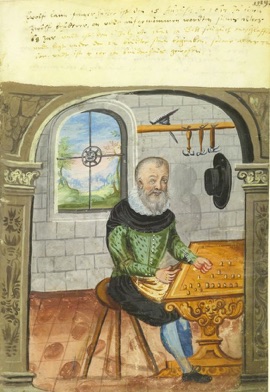
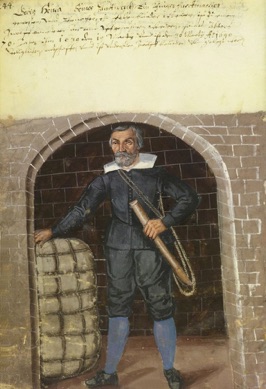
Fig 27 Fig 28
It is not known in which of the three graves the thimble makers were buried.
References
1. Gugel, Christoph Friedrich: Norischer Christen Freydhöfe Gedächtnis....Nürnberg, 1682.
2. Zahn P. Die Inschriften der Friedhöfe St. Johannis, St. Rochus und Wöhrd zu Nürnberg (bis 1580). Alfred Druckenmüller Verlag, München 1972:
3. Zahn P. Die Inschriften der Friedhöfe zu Nürnberg; Nachträge, Teil 2. (1581 bis 1608). Dr Ludwig Reichert Verlag, Wiesbaden, 2008.
4. Greif H. Talks about thimbles. Universitätsverlag Carinthia, Klagenfurt, 1983.
5. Greif H. Nuremberg Thimblemakers. Thimble Collectors International 1986.
6. Zahn P. Die Inschriften der Friedhöfe St. Johannis, St. Rochus und Wöhrd zu Nürnberg (bis 1580). Alfred Druckenmüller Verlag, München, 1972:36 & 281.
7. Zahn P. Die Inschriften der Friedhöfe zu Nürnberg; Nachträge, Teil 2. (1581 bis 1608). Dr Ludwig Reichert Verlag, Wiesbaden, 2008:91.
8. Trechsel,Johann Martin: Verneuertes Gedächtnis des Nürnbergischen Johannis- Kirchhofs; Frankfurt, Leipzig, 1735:455.
9. Gugel, Christoph Friedrich: Norischer Christen Freydhöfe Gedächtnis....Nürnberg, 1682. pp. 77
10. Zahn P. Die Inschriften der Friedhöfe St. Johannis; St. Rochus und Wöhrd zu Nürnberg (bis 1580). Alfred Drucckenmüller Verlag, München, 1972:145.
11. Zahn P. Die Inschriften der Friedhöfe zu Nürnberg; Biographische Nachträge und Erganzungen bis 1580. Wiesbaden, 2003: 20.
12. Zahn P. Die Inschriften der Friedhöfe St. Johannis, St. Rochus und Wöhrd zu Nürnberg (bis 1580). Alfred Druckenmüller Verlag, München, 1972:296.
13 Zahn P. Die Inschriften der Friedhöfe zu Nürnberg; Nachträge, Teil 2. (1581 bis 1608). Dr Ludwig Reichert Verlag, Wiesbaden, 2008:253.
14 Zahn P. Die Inschriften der Friedhöfe zu Nürnberg; Nachträge, Teil 2. (1581 bis 1608). Dr Ludwig Reichert Verlag, Wiesbaden, 2008:297.
Holmes: na.
Researched and published in 2002/11
Copyright@2011. All Rights Reserved
Magdalena and William Isbister, Moosbach, Germany
nÜrnberg thimble makers’ graves - St Johannes i
Navigation
